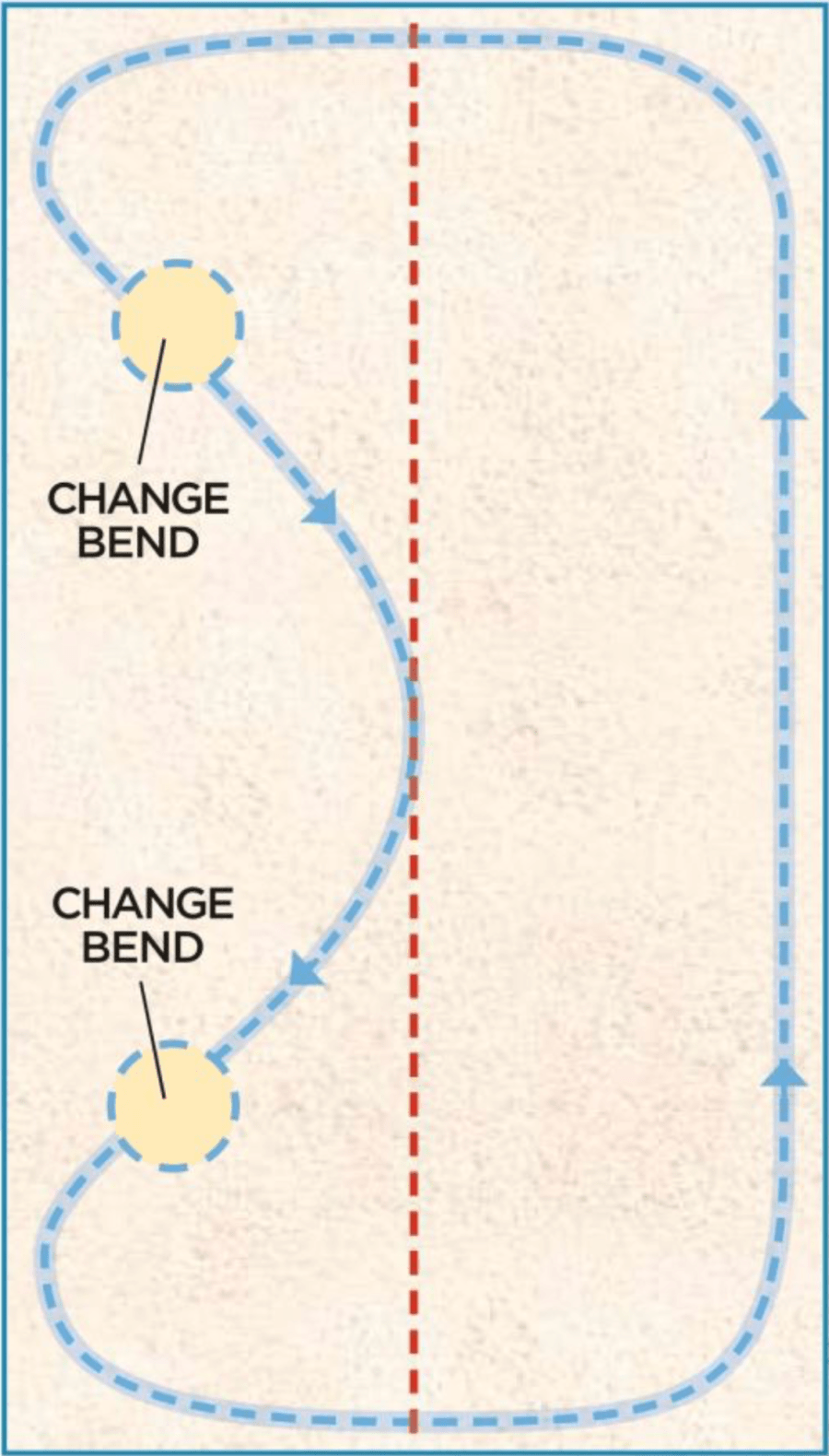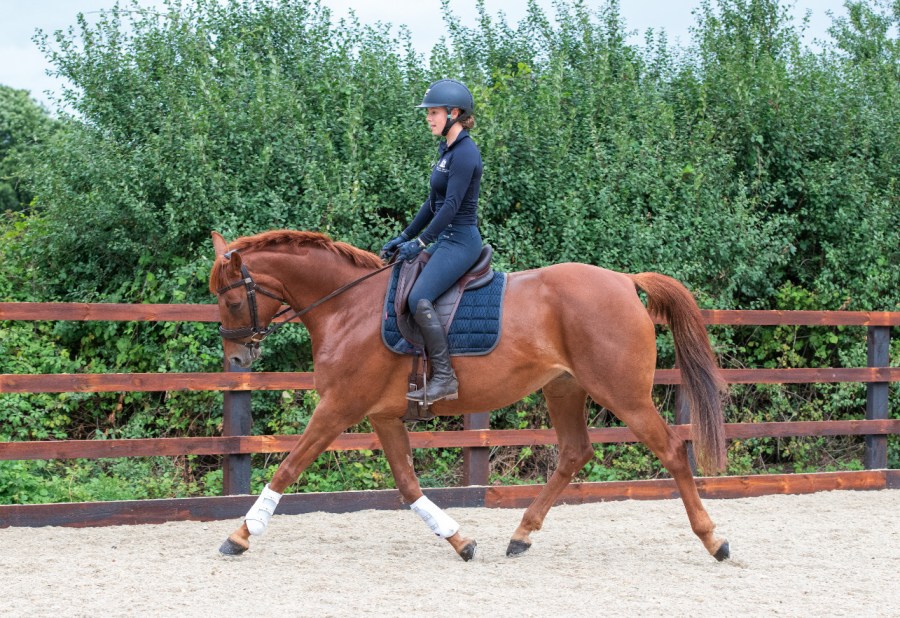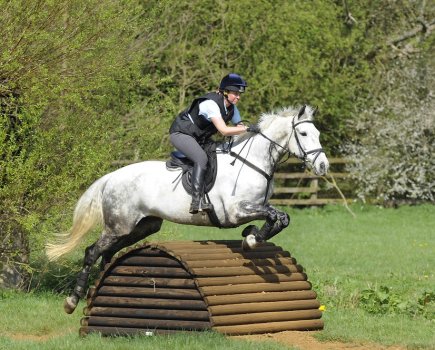On paper, riding a loop may appear really easy to do, but there’s a lot more to riding this movement than meets the eye. You’re asked to ride loops in a number of British Dressage tests, but they’re also a really valuable schooling exercise you can incorporate into your training in walk, trot and canter.
Improved suppleness and better coordination are just two reasons to ride loops. Dressage judge and trainer Alex Gingell explains.
As with any schooling movement, the devil’s in the detail – it takes consistency, preparation and coordination to ride a good loop, whether it’s 5m or 10m.
Loops are put in dressage tests so that riders can show their horse’s ability and willingness to adjust the bend of their body to the curvature of the line it follows. This should be without any resistance or change of pace, rhythm or speed.
How to ride a 10m loop in trot

It’s important to change bend at the right point, as is shown here in the diagram
- Ride a good corner before H, asking your horse for left bend.
- Ride a smooth curve to the left from H, riding towards the centre line.
- About halfway between H and X, straighten your horse for about one horse’s length.
- A 10m loop hits X momentarily, so as you reach the middle of the arena, ask for right bend, look across to K, and ride towards this marker.
- Halfway between X and K, straighten your horse for one horse’s length and then smoothly change the bend to the left.
- As you reach the track at K, maintain the left bend and ride the corner to complete your loop.
What the judge is looking for
“When I’m judging, I want to see a well-ridden corner before the loop and the horse round, connected, rhythmical and balanced, with a clear inside bend,” explains Alex. “Then I want to see the movement ridden accurately and smoothly, with the bend changing according to the direction, maintaining the quality of the trot throughout.”
Things that can go wrong:
- Inaccurately shaped loops
- Loss of rhythm or balance
- Stumbling
- Hollowing/ tightening over the back or resistance
- Swinging quarters
- Breaking into canter
Meet the expert: Alex Gingell is a British Dressage list 4 judge and trainer. He and his wife Jayne founded and run Hack Up, an award-winning bespoke supplement company for horses.









